
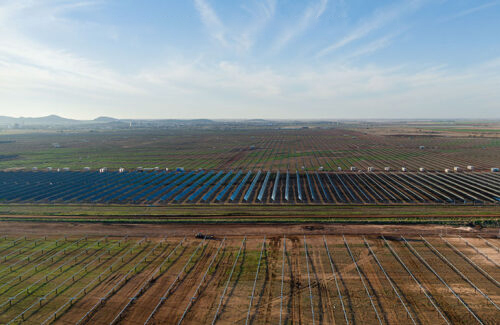
Savion announced today that the Kiowa County Solar Power Project (KCSP) located in Kiowa County, Oklahoma, has begun commercial operations. This 100 megawatt solar facility is Savion's first project developed, constructed, and owned in the state. The project covers an area of 1235 acres and started construction in August 2023, with completion in December 2024. It includes over 189000 double-sided solar panels. We have signed a long-term power procurement agreement with a Fortune 100 technology company to purchase all the production capacity of the facility. The solar project is located in the southwest of Oklahoma, adjacent to Snyder Town, and is expected to generate enough electricity annually to power approximately 21000 households in Oklahoma for the next 40 years. The project will be interconnected with the AEP substation and connected to the Southwest Power Alliance. SOLV Energy is responsible for the EPC work of the site, while Shell Renewable Asset Management International (SRAMI) is responsible for overseeing asset management. Savion President Nick Lincon stated, "The launch of the Kiowa County solar project will expand Savion's operational asset coverage and emphasize our mission to own and operate solar facilities that contribute to injecting clean energy into the US power grid. The launch of this project marks another milestone for Savion as an independent power producer, and more facilities will be put into use in the future
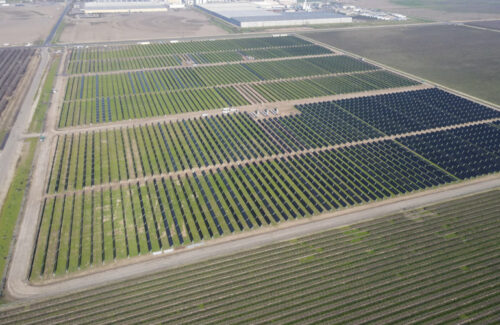
Ardagh Glass Packaging North America (AGP North America), a subsidiary of Ardagh Group, has completed a 13 MWDC solar project that will soon provide clean energy to its factory in Madeira, California. The Madera solar farm, built, owned, and operated by Longroad Energy, will provide renewable energy for Ardagh's glass manufacturing plant, accounting for approximately 20% of the plant's electricity demand. Longroad collaborated with First Solar, Valta Energy, McCarthy Building Companies, Nevados, and AC Electric Company to make the project a reality. Eric Barnhart, Vice President of Development at Longroad Energy, said, "Longroad Energy is pleased that our solar project will help AGP North America achieve its impressive sustainability goals. We are proud to collaborate with AGP North America to contribute to a clean and more resilient future In addition to the Madera project, in 2019, Ardagh also collaborated with KDC Solar to build a state-of-the-art solar field at a glass production plant in Bridgetown, New Jersey. This renewable power project in Madeira demonstrates Ardagh's commitment to sustainable development, "said Brian Brandstatter, President and CEO of AGP North America. In addition to protecting the environment, we also invest in local communities and customers. By strengthening our sustainability efforts, we ensure long-term value, reliability, and cost-effective solutions for brands that rely on us. This initiative highlights our commitment to becoming a responsible and forward thinking glass container manufacturer in California
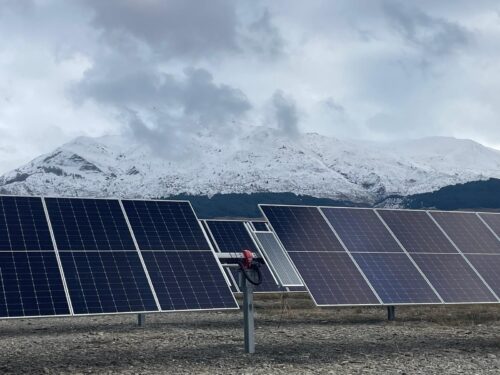
Solar bracket manufacturer DCE Solar has partnered with global solar tracking technology provider Axial Structural Solutions to bring Axial's dual row tracker Twin to customers across the United States. Tracker Twin is the first dual row tracker to adopt co directional power technology, which can adapt to different terrains and minimize civil engineering. According to the press release, the Tracker Twin has undergone wind tunnel testing and can withstand extreme weather conditions. The torque tube of this tracker is designed to shorten installation time and uses corrosion-resistant fasteners and components. It uses proprietary operating software to minimize inter line shading to the greatest extent possible. More than 25 GW of axial tracker solutions have been installed worldwide. Tracker Twin is designed to support larger module formats and withstand challenging environmental conditions. DCE Solar founder and CEO Bill Taylor said, "Our collaboration with Axial marks an important milestone in our mission to drive efficiency and innovation in solar installations. The revolutionary design of the Tracker Twin will enable developers to reduce costs, increase project feasibility, and maximize energy production. We are pleased to introduce this cutting-edge technology to the US market and help shape the future of solar energy
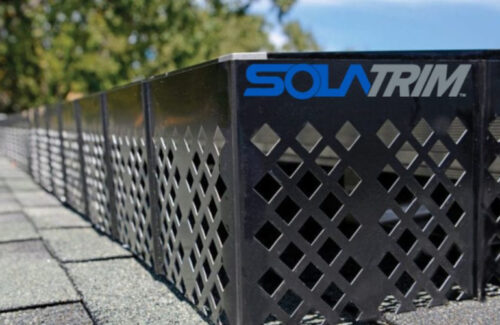
SolaTrim has launched a new pest control system ST-500 panel for residential solar projects. The ST-500 panel is 5 inches tall and has more diverse functions, which can protect the solar cell array from harmful pests and debris accumulation, and does not require too much trimming. ST-500 adopts a durable and weather resistant aluminum structure, with a smooth black coating on the surface and a seamless appearance. Its innovative diamond embossing design ensures airflow beneath the panel, maintaining system efficiency, while 3M VHB adhesive simplifies installation - no screws or rivets are needed. Sarah Lemberg, Sales and Marketing Director of SolaTrim, said, "The ST-500 provides installers with greater flexibility in size selection when using SolaTrim for customers, ensuring effective protection for solar arrays of all sizes
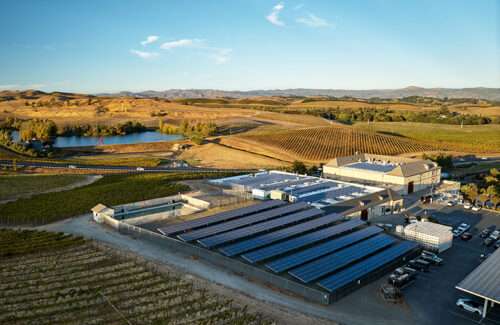
Schneider Electric announced that Caneros Winery (a producer and grower of premium Caneros sparkling wine and limited edition Pinot Noir wine) reduced carbon emissions last year by deploying solar microgrids, saving $70000 annually. In the heart of Napa Valley, Caneros Winery has deployed Schneider Electric's EcoStruxure Microgrid, a standardized and validated microgrid platform for managing the winery's on-site power generation. By deploying solar panels and microgrids, Caneros Winery can independently produce nearly 80% of its energy for winery operations such as fermentation, bottling, and wine tasting. Given the significant threat posed to California's brewing industry by the increasing number of public safety power outages and extreme weather events, deploying resilient and energy-efficient microgrid solutions is crucial for the operation of breweries, "said Jana Gerber, North American President of Schneider Electric Microgrid. This system allows breweries to manage energy from solar panels, batteries, and generators, providing backup power. All of this is managed through our microgrid control, providing seamless power to the distillery The winery manages its energy usage through Schneider Electric's EcoStruxure Microgrid Advisor software platform, which uses artificial intelligence to monitor the on-site distributed energy (DER) generation. The deployment of microgrids has doubled the power generation of Domaine Carneros compared to the solar system originally installed by the winery 20 years ago. Excess solar energy is stored in on-site batteries for use at night or during power outages, while backup generators can provide additional energy when solar energy is unavailable. Remi Cohen, CEO of Domaine Carneros, said, "Our ability to produce the highest quality wine and create the most unforgettable wine experience depends on reliable and efficient energy. With Schneider Electric's advanced microgrid technology, we are able to completely transform our energy infrastructure and maximize the use of renewable energy. This is crucial for maintaining our operations during times when power outages due to wildfires and severe weather are becoming increasingly common The microgrid enables Caneros Winery to be completely self-sufficient during power outages. It allows wineries to connect and disconnect from the power grid, allowing for operation in "island mode" with batteries storing energy for emergency use. If the power grid experiences a power outage or electricity prices reach their peak, microgrids will respond by providing continuous power supply during the outage and helping to avoid excessive electricity demand costs during peak hours. Schneider Electric collaborated with the PowerFlex division of EDF Renewables to design a microgrid. PowerFlex provides power infrastructure to integrate solar energy and battery storage systems.

Renewable America announced that its West Tambo Clean Power II (WEST-II) site has achieved commercial operation. This 8.5-acre, 2.93-megawatt DC solar project is located in Livingston, California, in a community designated as vulnerable (DAC) and low-income (LIC). WEST-II will provide clean renewable energy to San Jose, California. The WEST-II site integrates environmentally vulnerable groups and low-income communities into one project, forming a strong mutually beneficial cycle - providing employment, cleaner air, and economic growth for one side, while providing affordable renewable energy for the other, "said Ardi Arian, President and CEO of Renewable Energy USA. We also celebrated several important milestones in this development, such as a promising new partnership with San Jose Clean Energy Company, successful union labor contracts, and expanding opportunities for vulnerable groups to use solar energy A key aspect of the WEST-II development project is the integration of local union labor halls to ensure that the project supports workers in the region, especially those participating in apprenticeship training programs. In addition, the project also received a 20% ITC under the Low Income Community Reward Points Program for selling electricity to low-income households. Renewable America led the development of WEST-II, utilizing internal resources for end-to-end project development, including land survey, lease negotiation, engineering, licensing, design, and initiation. The project was built with higher efficiency, quality control, and coordination throughout all stages of development and construction, while the majority of the work was completed independently by the licensed C-10 and General B construction departments.
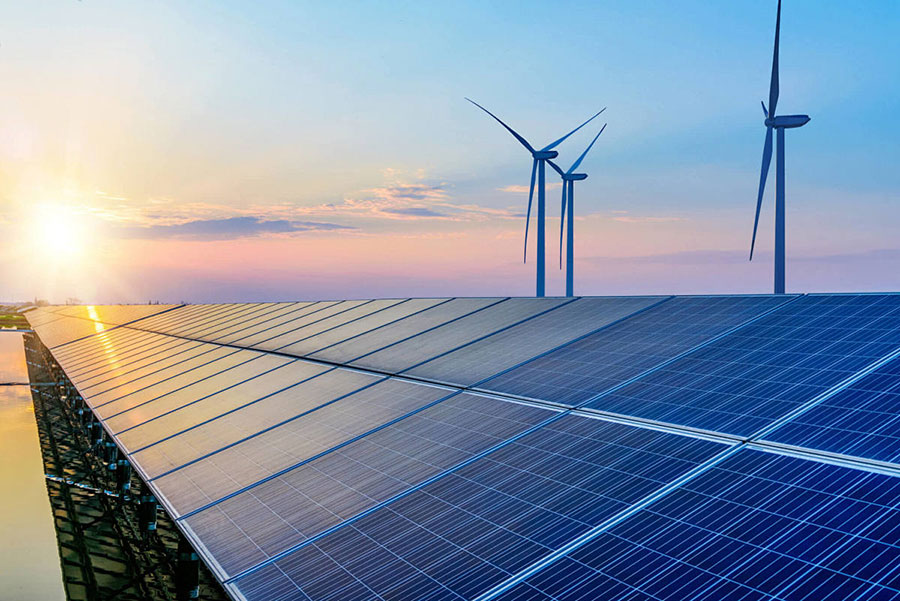
The main trends of solar energy from the beginning of the year to the present (YTD) are: EIA stated in its latest monthly "Electricity Monthly Report" (data as of December 31, 2024) that the total utility scale and "estimated" small-scale (such as rooftop) solar energy increased by 26.9% in 2024 compared to the same period in 2023. The scale of solar thermal and photovoltaic power generation in public utilities increased by 32.0%, while small-scale solar photovoltaic power generation increased by 15.3%. Overall, solar power accounted for nearly 7.0% (6.91%) of the total electricity generation in the United States for the year. In December alone, the scale of solar power generation by public utilities increased by 42.0% compared to December 2023. Small scale solar energy (i.e. systems with a capacity of less than 1 megawatt) accounts for 27.9% of all solar power generation and will provide 1.9% of the United States' electricity supply by 2024. [1] In fact, the electricity generated by small-scale solar photovoltaic power generation is almost twice that of utility scale biomass power generation, and more than five times that of utility scale geothermal power generation or petroleum liquid and coke mixture power generation. Key milestones for renewable energy structure in 2024: In 2024, the power generation of wind farms in China will increase by 7.7% compared to a year ago. Wind energy remains the largest source of renewable energy generation, accounting for 10.3% of the country's total electricity generation. By 2024, the combination of wind and solar energy will provide over 17.2% of the country's electricity generation. The combination of all renewable energy sources (i.e. wind, solar, hydro, biomass, and geothermal) will provide 24.2% of the total electricity production in the United States by 2024, compared to 23.2% a year ago. From January to December this year, renewable energy generation increased by 9.6% compared to the same period last year, almost three times the growth rate of natural gas generation (3.3%) and more than ten times the growth rate of nuclear power generation (0.9%). In December alone, renewable energy generation increased by 10.1% compared to December 2023. Other noteworthy developments: By 2024, wind power generation will exceed hydropower by 87.2%, while solar power generation will exceed hydropower by 25.2%. [2] In addition, this year's wind and solar power generation is 15.9% higher than coal, approaching the share of nuclear energy in total power generation (17.2% vs. 17.8%). The renewable energy structure has consolidated its position as the second largest source of electricity generation after natural gas. Renewable energy currently provides a quarter of the country's electricity, "said Ken Boson, Executive Director of SUN DAY Campaign. Therefore, the reckless actions of the Trump administration to disrupt wind, solar, and other renewable energy sources will have serious negative impacts on the country's power supp...
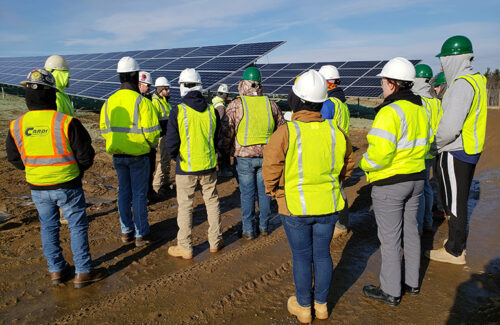
In order for a community solar energy project to operate, a group of users need to pay for the project and receive renewable energy credit lines for their contributions. Although this type of subscription is usually lower than customers' usual electricity bills, community solar is not a widely adopted energy option nationwide. How to educate, attract and retain customers has always been a huge challenge, "said Dan Clarke, Senior Vice President of Marketing at Nexamp, a community solar developer. This is not a challenging product, but a product with low visibility in the field. It's not like buying soft drinks, people know it's like Coca Cola, Pepsi, and some other brands The National Renewable Energy Laboratory reports that community solar projects have covered 44 states, with 23 states and Washington D.C. explicitly allowing the use of such solar energy through legislation as of June 2024. Unlike independent projects, community solar cell arrays require financial support from community residents and businesses, so promotion is a crucial step in project development and long-term maintenance. The promotion method of new community solar energy projects depends on the community's cognitive level. Then, it depends on the degree of involvement of the city or municipal authorities in the project. The traditional promotion methods include holding face-to-face meetings to introduce the basic knowledge of community solar energy; Sending emails (sometimes printed on official letterhead of the municipal authorities) to residents, informing them of new projects in the community; Or carry out digital marketing activities and produce informational videos. Education always comes first, "Clark said. We have delved into many details to help customers understand what it is; its benefits, we are not third-party energy suppliers, we are different, how it operates. We have spent a lot of time, effort, and resources creating educational content to truly help explain a plan that may be a bit difficult to understand. What I mean is, energy itself is complex Nexamp develops, builds, and maintains community solar arrays and subscription services, which Clarke says will help launch solar arrays in new towns. If successful, the array will exist for 30 years and will require a subscription service during this period. For new markets and locations, you need to start from scratch because community solar energy is not within the scope of national attention, "said Keith Hevenor, Nexamp Communications Manager. It is actually only within the scope of concern of each state The company assists advocacy organizations such as the Solar Energy Industry Association and the Community Solar Energy Usage Alliance in raising awareness of the concept of community solar energy and its project operation methods. New York solar developer UGE does not manage community solar subscriptions, but still finds promotion to be a necessary element for project initiation. UGE leases land for community so...
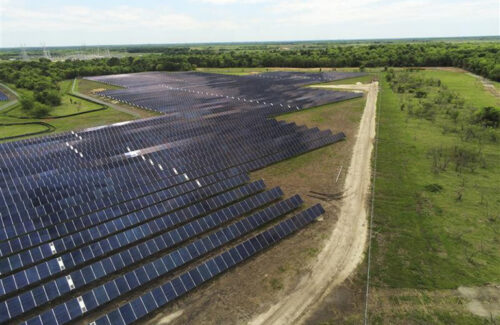
Industry quality assurance provider Intertek has verified that GameChange Solar's Genius Tracker single axis solar tracking system is compatible with approved components and can be used for the operation of 2 kV solar projects. The Genius Tracker is installed in a 5-megawatt project in the southeast that uses a 2 kV electrical system. The transition from 1500 V to 2 kV technology improves electrical efficiency by increasing voltage instead of current, reducing voltage drop, and allowing more energy to reach the inverter. This transformation can reduce material costs, improve power processing capabilities, and lower the levelized energy costs of the project. Scott Van Pelt, Chief Engineer of GameChange Solar, said, "Verifying the compatibility of 2kV operation is an important step forward for the industry. Our successful deployment in the southeastern United States demonstrates that GameChange Solar's Genius Tracker is ready for the next generation of high-voltage solar projects, providing higher efficiency and lower system costs Intertek evaluated the Genius Tracker according to UL 2703 standard to assess the impact of voltage rise. The review confirms that no additional testing or modifications are required to verify the compatibility of the Genius Tracker bracket system with the 2 kV system.
Categories
New Products
Tin Roof Rapid Solar Mounting System with Hanger Bolt Read More
Residential Small Solar Easy Bracket Kit for Home Balcony Read More
Automatic Single Pile Solar Tracker with 10 PV Panels Read More
Angle Adjustable Aluminum Easy Solar Panel Bracket for Garden Read More
Intelligent Single Post Dual Row Solar Tracking System Read More
5000ES Solar Off-Grid Energy Storage Inverter Supplier Read More
Multi Drive Double-Sided Single Axis Tracker System Read More
© Copyright: 2025 Xiamen Wintop New Energy Tech Co., Ltd.. All Rights Reserved.

IPv6 network supported
Friendly Links:
Integrated Solar System